In a fast-evolving and increasingly competitive world, it is rarely enough to have a good product or service. Moreover, it is often not enough to simply advertise these goods to create lasting relationships with customers. Creating a strong brand identity and using brand advertising is key to building such trust and achieving business success.
A well-crafted brand ads strategy ensures your company or enterprise resonates with your audience. These campaigns are designed not just to sell but to build loyal and strong connections with your target market. If you are looking to create a strong business identity that leaves a lasting impression, that’s the perfect place. Down below, we are going to explore all the peculiarities of branding ads. Let’s dive in.

What is brand advertising?
Brand advertisement is a type of strategy that develops recognition, and customer loyalty, and builds lasting relationships with clients. The purpose of ads is to capture people’s attention, and establish a stable positive business identity, credibility, and awareness.
The brand identity is an idea behind the product or service, a concept that allows customers to recognize offers made by specific companies out of the huge number of similar products and services.
What does branding in advertising include?
Branding includes name, logo, packaging, pricing, and other specific traits of the product. Those are essential elements of company identity. The idea behind the offer can define advertising strategy, as it is often determined by values promoted by the company more than by the actual product.
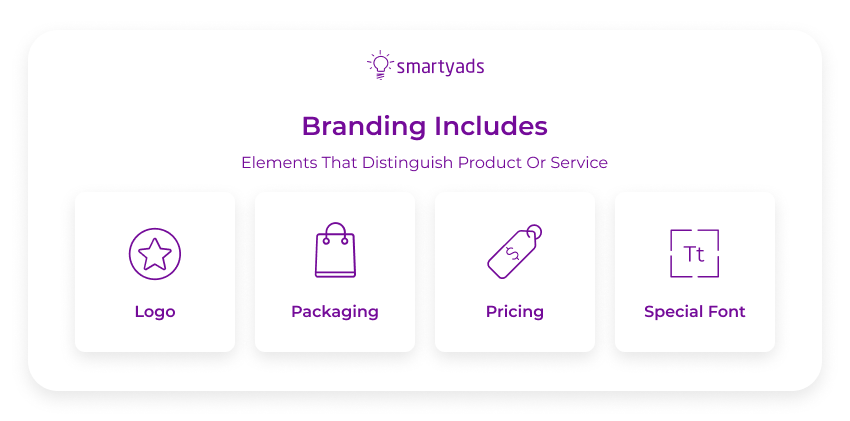
Elements of effective brand ads
It’s impossible to create a truly impactful brand campaign without knowing the core elements of an effective ad. These are the combination of various details that help marketers connect with their audience on a deeper level, creating a lasting and positive impression about their company. Here is what you need to focus on when creating your next ad.
Consistent branding
First of all, you should make sure that all your further campaigns are consistent in all their aspects: from colors and fonts to messages and logos to reinforce your unique identity. It’s the essence of developing a recognizable brand image that clients trust and choose. This way, your target audience will easily associate any of your ads with your company which nurtures familiarity.
Authenticity
Nowadays, people are so fed up with fake offers, clickbait headings, and ads that bombard them all over the place. Audiences are seeking genuine connections with transparent and open companies. Let your company be its authentic self through all the advertising efforts. Steer clear of exaggerated claims and focus on showing what your business truly represents, and what missions and values you stand for. Now, honesty and real stories without fluff have the power to sell.
Innovative formats
Thanks to the programmatic advertising innovations and demand-side platforms that facilitate the process of ad creation and management, the range of ad formats available to marketers is immense. Why focus on one or two boring ad dimensions if you can choose among the cutting-edge options like interactive, shoppable, video ads, or rich media? These formats capture attention and engage with the audience on a whole new level bringing exceptional results to your campaigns.
Visual excellence
It’s more and more challenging to impress and grab the attention of very exigent customers. As their demand and requirements grow exponentially, so should your visual ads. Invest in high-quality images and top-notch resolution videos, and create unique design elements to stand out and gain the attention of your target group. Visuals can also be a very powerful tool to communicate important messages that are more memorable.
Powerful call to action
No ad works well without a striking and concise CTA. It’s an integral part of a successful brand ad campaign. The main requirements are the following: it should be action-oriented, compelling, and create a sense of urgency or excitement. This element is the bridge between an engaged viewer that converts into a loyal client.
Emotional connection
Brand advertising is about building emotional connections in the first place. Make emotional response drivers in any marketing-oriented decisions you make. No matter what industry your business is related to, tapping into your clients’ feelings is the most potent way of forging deeper bonds. Make every element of your campaign memorable and make sure they evoke true emotions.
Breathtaking storytelling
Storytelling is a very popular and effective way of evoking emotions. Compelling and emotional storytelling can transform a very basic ad and turn it into a memorable experience people will definitely remember. Tell a narrative that resonates with your audience and talks to their specific needs and pains. Good examples in storytelling advertising can grab the attention of your audience and leave an impression that lasts.
Customer-focused approach
And the last and most important element of your brand ad campaign is always your customer. They should always be the center of your campaign no matter what you do. All your marketing and advertising activities should rotate around your customers and perfectly meet their needs and expectations. Use data-driven insights to understand your clients better and deliver ads and solutions that can make their lives better.

Examples of brand advertising
Companies that use brand ads are usually focused on connecting with customers on both emotional and intellectual levels in order to create a unique and memorable business image behind their products and services. Here are the best brand ads.
Coca-Cola
Some of the most famous brand advertising examples include Coca-Cola, as they involve strong emotional associations and consistent brand identity that we have recognized over the years.
As we can see, the task of ads is not to sell the product as fast as possible but to create a strong brand identity.
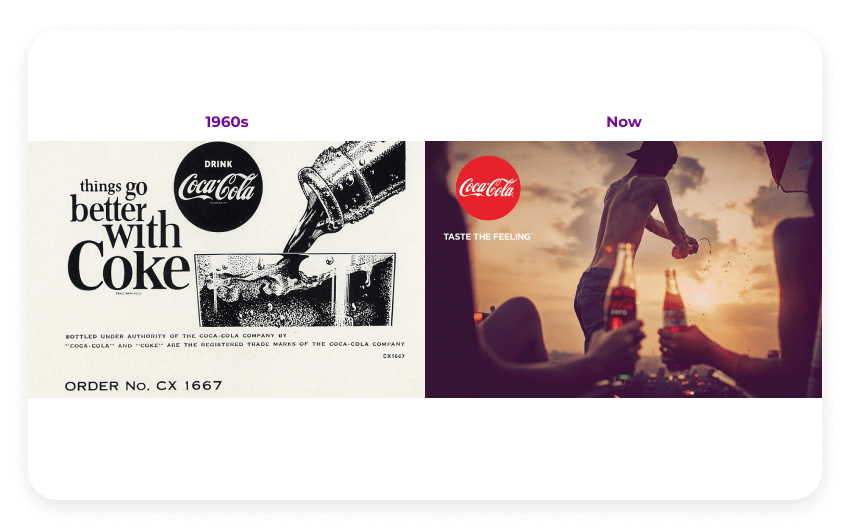
Nike
The same application of brand positioning we can also see in the Nike display ad. With a certain image and slogan, a combination of colors Nike created a certain image that is strongly associated with a business. For online display advertising these elements are indispensable for the company that wants to be memorized.

The Burger King
The Burger King advertisement focuses on the emotional side of the ad - exactly this element creates a strong brand recall for campaigns.

McDonald's
The world's largest fast-food restaurant McDonald's uses various brand advertising tactics, one of them is making their food appealing to the kids.

Apple
Although marketing campaigns of Apple are minimalistic like the design of their gadgets, Apple fans always recognize the signature features of their favorite company.

Amazon
The Amazon eCommerce store allures Internet users with an image of the largest American online purchasing platform that features beneficial prices. More brand awareness campaign examples like this can be found in our next articles.
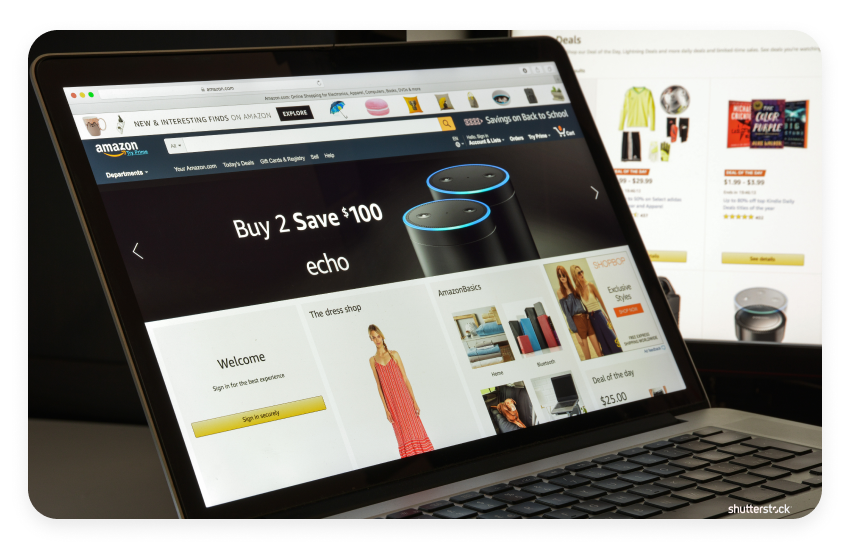
Nissan
Nissan has always been among companies oriented on brand advertising because it helps the company to maintain the image of the market leader through the years.

L’Oreal
The same strategy was applied to maintain the image of a leading mass-market body/face/haircare company.
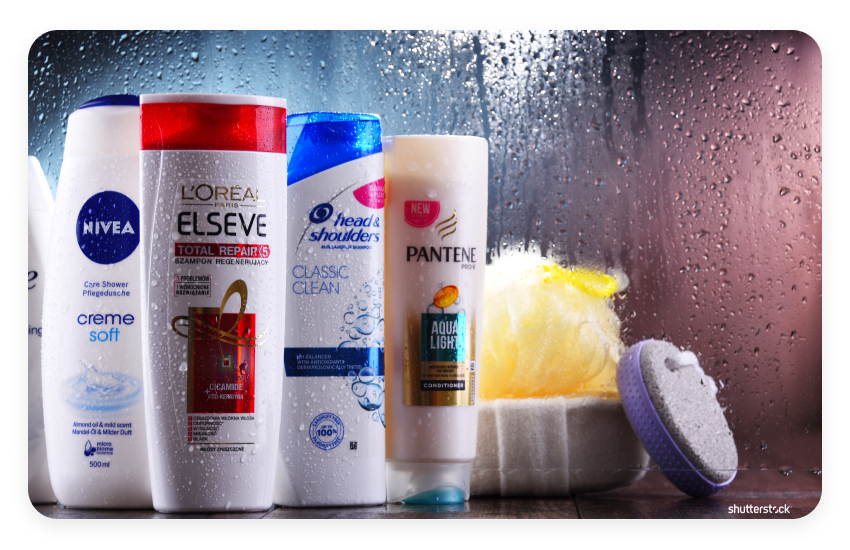
Who should use brand advertising?
Generally, two types of advertising strategies are distinguished — brand advertising and direct response marketing. Direct response ads encourage viewers to take action, those are easily measurable based on the achieved results of the campaign. Unlike direct response, brand advertising campaigns don't usually involve calls to action and are more focused on impressions and reach. How to decide which programmatic ads strategy your business needs?
Here are a couple of exemplary cases of brand advertising campaign goals:
- Introduction of the new product or company to the market;
- Maintaining company credibility and awareness around an already established brand;
- Supporting customer loyalty and keeping your audience interested;
- Increasing leads and sales in a long-term perspective;
- Adding up new value to the business credibility or entire re-branding of the company;
These goals often help each other - introducing a new product can also increase customer loyalty while maintaining brand awareness can also help to get more leads. In contrast, direct-response marketing suits better when it comes to exact goals. Direct response goals may include increasing sales, promoting specific offers, or building a mailing list.
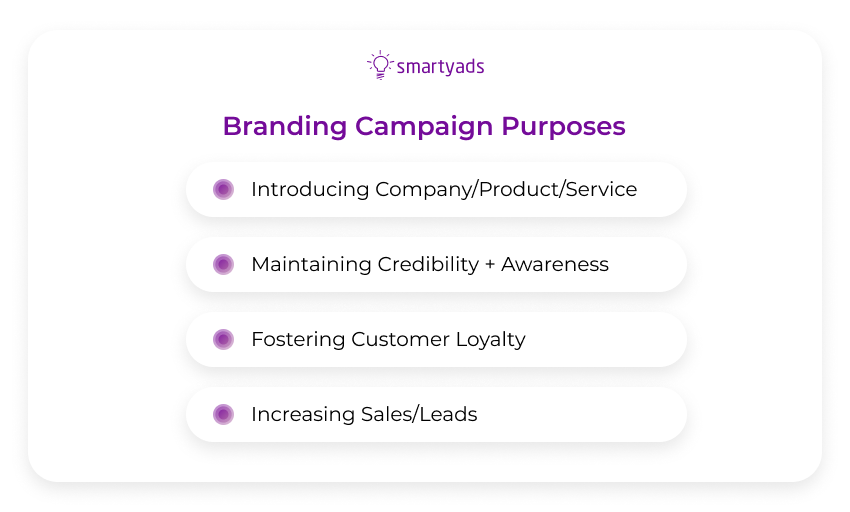
How brand advertising works
Now that we’ve got a brand advertising definition, let us move to the implementation of brand ads. The development of a similar advertising campaign usually consists of the following steps:
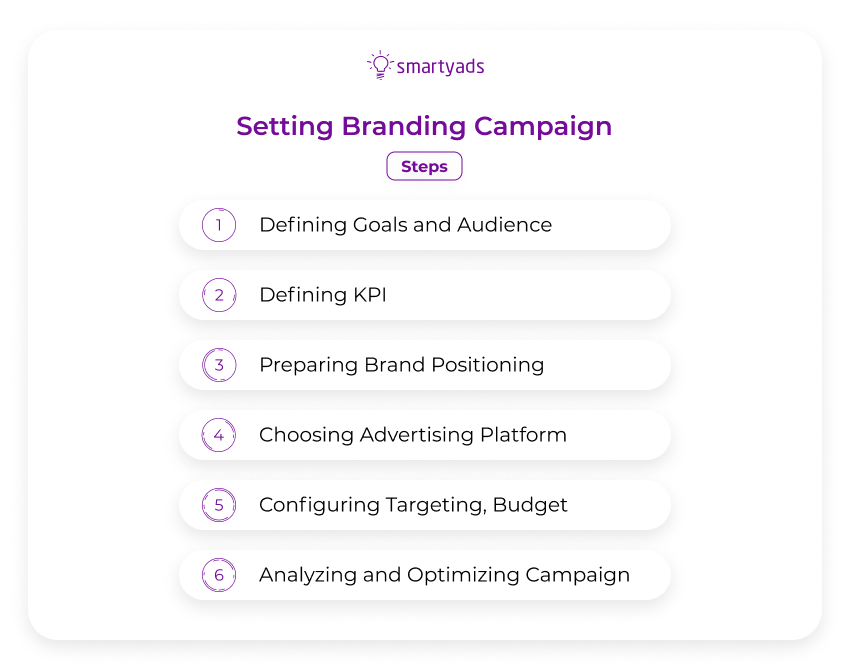
Step 1. Defining goals and audience
Before launching an advertising brand ad campaign you should define clear goals. The objectives can include increasing brand awareness, introducing new products, creating a positive company image, etc.
The choice of the goals also determines the target audience persona, and sometimes each segment of the audience can be assigned a unique business goal.
In order to achieve these advertising goals, it is necessary to precisely understand the main characteristics of each segment among your audience. These usually include demographics, geolocation, social position, interests and problems, channels they choose, etc.
Step 2. Brand positioning
The second most important thing about your brand advertising strategy is market research and subsequent positioning. It requires some time and effort, but a correct vision is indispensable for precise brand positioning. There are several things to consider while creating ads:
- Before launching a campaign, do market research. Investigate the industry landscape, how saturated the market is, who are the main competitors, their unique features, and target audiences.
- The current position of the brand — its popularity and customer’s attitudes, advantages, and disadvantages of the product, and main features.
- Unique value or unique selling proposition - a specific feature of the product or the particular problem it is designed to solve not covered by the competitors yet.
- Apart from practical usage, there is also often an added value, such as, for instance, prestige, fashion, high social status, or a feeling of belonging.
Quality is usually paramount for advertising. However, nowadays, ads brand positioning becomes a decisive part of a company's success or failure much more often. Remember that the image of the product in the mind of consumers is sometimes even more important than the actual product itself.
Step 3. Application
Based on the chosen goals, audiences, and a desirable brand positioning, one can start acting:
Choosing the right tools and strategies
Depending on the target audience, one should choose tools and channels for advertising, duration, and other details of the campaign. It is also important to create a unique strategy for each channel taking into consideration specifics and how your audience uses this channel.
Setting a budget
Important details of your brand advertising strategy can depend a lot on your budget and its distribution. Emphasize channels that perform best and cut your expenses on ones that don’t work well. Always keep your main goals in mind and distribute your resources accordingly.
Setting up a campaign
This step is an implementation of your strategy. Set up a digital advertising campaign on a demand-side platform, and let it automate media-buying based on your conditions (targeting, frequency, campaign budget, etc). The platform will automatically find the right media and advertising inventory and serve impressions to your brand's audience.
Running, optimizing, and campaign management
After the creation of the campaign, it is important to closely monitor and track its performance long-term and short-term. Pay attention to changes in your brand traffic - the increase in searches for your company’s name is a good sign for your brand advertising campaign. Sometimes advertising campaigns can perform better after changing a small detail so take action when necessary. Be sensitive about such things and timely optimize them to dramatically influence the success of your endeavor. We also recommend to take a look at our article on how to advertise tutoring services where you can also find useful tricks to get inspired.
How to measure the success of brand advertising
Measuring the success of any advertising campaign is an essential part of a strategy that enables marketers to determine whether the efforts invested are worth the outcomes.
Here are the metrics that will help you identify the effectiveness of your efforts as well as areas for optimization:
Brand awareness metrics
Brand awareness is the primary goal of every marketing professional and brand campaigns are focused specifically on this objective. Therefore, you should measure direct traffic to your website, brand reach volume, and other metrics that can help you see how the brand image grows and becomes easier to recognize.
Social media engagement
Social media plays a crucial role in all marketing activities so pay extra attention to social media engagement metrics across all the platforms you are being represented. Likes, comments, shares, and the number of followers are extremely important and they reflect how engaged the audience is and how your campaigns perform.
Website traffic and behavior
These are pretty basic but yet core metrics you should not forget about. With the help of analytics tools, analyze how the website traffic changed to see the impact of your marketing strategy — search for direct visits, time spent on the website, pages that people view, etc. It shows if people are interested in knowing more about your business after seeing your ads.
Ad recall surveys
This type of survey can demonstrate if your campaigns perform well or if they need some enhancements. Ad recall surveys measure how well your target audience remembers seeing your campaign. This shows how memorable and distinctive they are so you can improve it even further.
Long-term metrics
And lastly, you should understand that branding ads will pay off over time. They don’t bring instant results so you should stay patient. Focus on evaluating long-term metrics such as client loyalty, customer lifetime value (CLV), recurrent purchases, etc. to see how your brand ads contribute to the overall company success and growth.
Final thoughts
Using brand advertising in marketing can help businesses reach many goals. It’s not about immediate results, it’s about building a strong foundation for your long-term success. With a brand identity, a defined set of channels, and a precise budget, one can start building a unique and consistent business image by setting perfect brand advertising campaigns. It can serve as a basis for lasting and trustworthy relationships with your customers which is a key for successful company development.
With the right tools at your disposal, such as demand-side platforms (DSPs), running impactful and efficient brand campaigns becomes simpler and more effective. SmartyAds DSP offers cutting-edge technology to launch and manage campaigns that drive tangible results.
From premium inventory access to advanced targeting and real-time analytics, SmartyAds DSP ensures your ads reach the right audience at the right time. With over 11 years of experience and 10+ international awards, SmartyAds is a trusted leader in programmatic advertising, helping businesses achieve meaningful connections with their audiences — feel free to contact us with any questions.
Make your business grow with programmatic brand advertising — sign up at SmartyAds DSP!


.webp)


